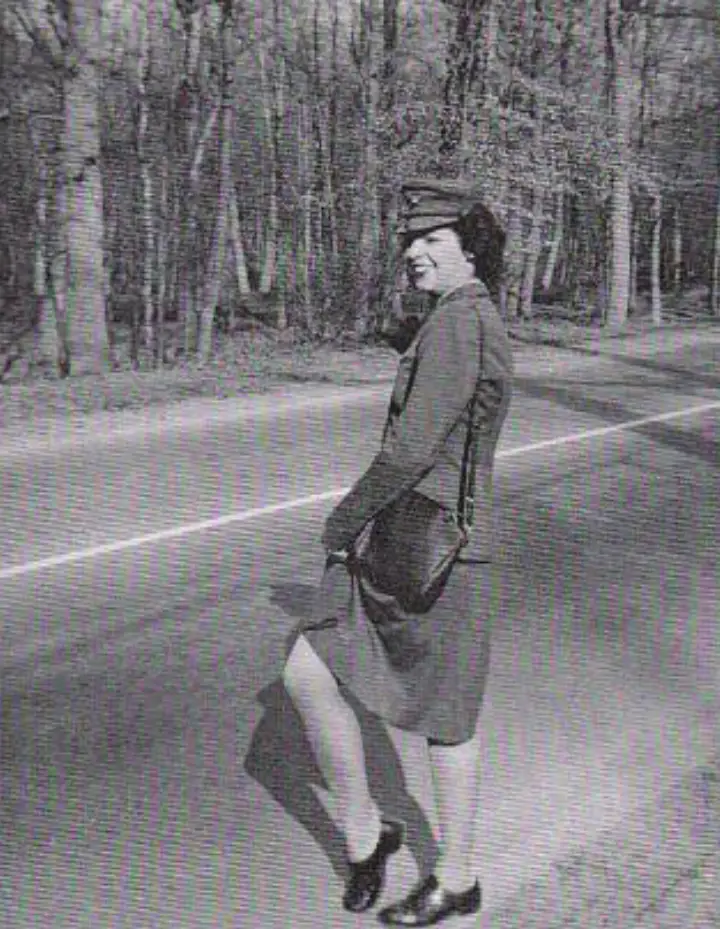Corporal Emmert finished her earthly tour of duty, and retreat was called for her on June 5, 2022. She had been at her post for almost 100 years.
Born Lou Hughes (later Emmert, wife of Madera farmer Charles Emmert), she was the daughter of Marshall Hughes, granddaughter of William Hughes, and great-granddaughter of Thomas E. Hughes, affectionately known as the “Father of Fresno.” She decided to serve her country during World War II by putting on a uniform.
After the bombing of Pearl Harbor, she took a job in Sacramento with the Army at McClellan Field. It was while thus employed that she and seven other women decided that civilian life didn’t offer the fullest opportunity to serve their country, so they decided to join the Marine Corps on the first anniversary of the formation of the WRs, as the women in the Corps were called.
In a 1942 article, the Sacramento Bee announced the women’s intention. They would take their six weeks of basic training at Camp LeJeune, North Carolina, after which they would receive their first permanent assignment in the nation’s war effort.
It took “Private Hughes” and her seven comrades-in-arms three days and three nights to reach the East Coast where, under the watchful eyes of vigilant drill instructors, they learned the art and science of small arms fire, close order drill, and military protocol. Then, for Lou, it was off for Quantico, Virginia, where she would join a motor transport company.
Emmert recalled that she learned to both drive and repair a variety of vehicles, including jeeps, garbage trucks, troop transports, and even one very fancy Buick.
At first, Lou was assigned to troop transport duty. Her job was to get green troops to the field for maneuvers and return those who were finished. Then she was given the “commissary run,” in which she drove three times a week to Washington, D.C., to procure supplies for the base at Quantico and to make a ritual stop at the home of the Commander of the Marine Corps, General Vandergrift, to deliver flowers and vegetables to him from the base.
Lou remembered with fondness another general. Her assignment as a personal driver for General Cummings was replete with pleasant memories. Emmert had driven the general to Washington one day, and upon their return, he asked that Lou be assigned to him on a permanent basis. Emmert chauffeured the Brigadier for the remainder of her tour of duty with only one harmless mishap.
Since Lou never knew when the General would require transportation, she kept his Buick with her. One day, while giving several of her fellow WRs a lift to the barracks, she took a sharp turn at an underpass and grazed a surprised 2nd Lieutenant. The young officer quickly recovered, snapped to attention, saluted, and then ran off as fast as his legs could carry him. He had seen the star on the bumper of the General’s Buick. Normally there was a cover on the plate when Cummings was not in the car. This time Lou had forgotten to hide the star.
When asked how women in the Marine Corps spent their off-duty time. Lou just smiled. Sometimes several of them would go to Washington D.C. and rent a room in a big hotel. To get there, however, they had to take a coal-burning, steam locomotive, and by the time of their arrival, they were covered with soot. To recover, they would all pile into the bathtub at the hotel and make abundant use of room service.
Lou Emmert served her country in uniform until the end of World War II. She was offered a promotion from Corporal to Sergeant if she reenlisted, an offer which she declined because of letters from home informing her that most of her friends had returned to Madera.
“I loved it; I really did,” she exclaimed. “My happiest moment in the Corps came on V-J Day, and I knew the war was over.” Near the end of 1945, Lou came home, took off her uniform, and married Chuck Emmert.
Lou devoted many hours working as a volunteer at the Madera County Courthouse Museum, and every time she went into its War and Peace Room she saw her old uniform and dog tags on display. What memories they evoked for her and will continue to evoke for us.
Originally published in the Madera Tribune




